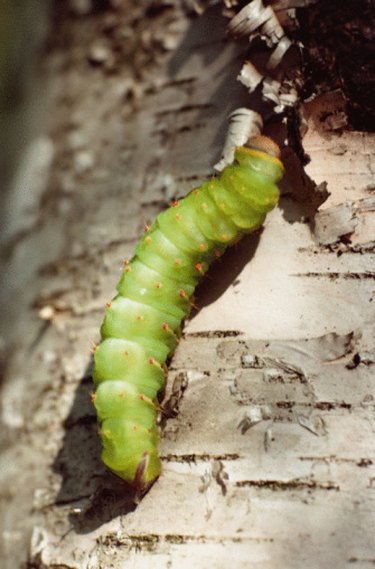
Texas is home to approximately 5,000 species of caterpillars with moth caterpillars outnumbering butterfly caterpillars nearly 11 to one. Caterpillars are classified in the Lepidoptera order, characterized by their unique and famous maturation process transforming from the juvenile caterpillar to the butterfly or moth. Most caterpillars in Texas are harmless, but some can sting. Caterpillars also play a vital role in the Texas ecosystem, but when the populations of some species are unchecked, they can be damaging to a farmer's crops. Included here are descriptions of the more common Texas caterpillars.
Identifying Caterpillars
Video of the Day
The Texas County Extension Service has entomologists on staff that can help you to identify a caterpillar. It is important to note its appearance, noting length, color, and markings before contacting the entomologist. Knowing the location, which part of the state, host plant, and the date you saw the caterpillar will increase the likelihood of the entomologist being able to accurately identify the species. Out of the vast number of caterpillars in Texas, only a few can actually sting a person, including the buck moth, puss caterpillar, back-waved flannel moth, saddleback caterpillar, and the Io moth.
Video of the Day
Junonia coenia
The buckeye butterfly can be found most often in parts of South Texas. The caterpillar can be identified by its shiny black color with two rows of orange spots on its back and two rows of white spots on its sides. The adult butterfly is a yellowish-brown color with large eye spots on the wings.
Danaus plexippus
Famous for their fall North American migration, monarch butterflies are known for their beautiful golden yellow, black and orange coloring. These adults were formerly caterpillars that were equally as colorful. The scientific name for this species is Danaus plexippus. The caterpillars grow to be about 2 3/4 inches long and appears to have wiry black antennae. It has the same coloring as the adult counterparts, with rings of black, white and yellow encircling its body.
Actias luna
The luna moth is a large moth which can be found in parts of North and West Texas, where they occasionally become pests to farmers, feeding on their cultivated crops. The caterpillars are a bright translucent green, with orange or red knobs known as tubercles on each body segment. The caterpillar also has a light yellow line running horizontally down the length of his body. As an adult, the caterpillar will become a Luna moth. With a wingspan of up to 5 inches, the luna moth has a light green transparent coloring with pink, purple, or yellow markings and twisted, elegant tails.